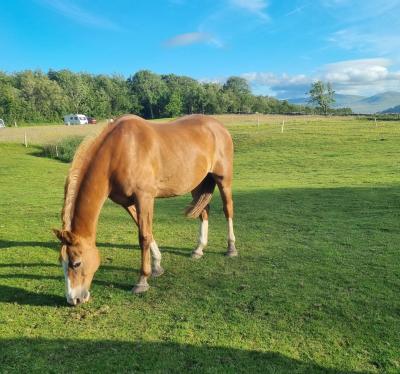
By vet Charlotte Pennington
We see a number of common summer skin conditions in horses including sweet itch, photosensitisation and pastern dermatitis.
Urticaria, or hives, is one of the most commonly encountered skin diseases in horses.

It can occur at any time of the year but is usually seen in the late spring and summer. Hives is a term describing an allergic type reaction whereby the horse comes into contact with, inhales or eats an allergen (i.e. something the horse is allergic/hypersensitive to). Following being exposed to the allergen, there is the sudden appearance of soft nodules or raised doughnut-shaped areas over part or most of the horse’s skin.
The lumps are occasionally itchy but are not normally painful and although it looks very dramatic, the horse is usually unaware of its appearance!
Many causes have been implicated such as pollen, fly bites, stings, drugs and food. The affected skin areas are usually of cosmetic significance only and the lumps will self-resolve as long as the horse is not re-exposed to the allergen that caused the reaction within a couple of weeks.
You should call the vet if your horse is excessively irritated by the lumps, or the horse repeatedly comes up in hives.
Treatments may initially involve steroid medication to reduce the reaction. Very occasionally the skin may become infected as a result of rubbing/itching so additional topical creams or medication may be prescribed if this is the case.
The key to prevention is to try to work out what the horse was allergic to and remove the chance of the horse being re-exposed to it. Often this is easier said than done! But, for example, perhaps the horse has moved fields, or changed bedding? If the problem persists it may be necessary to consider referring the horse for allergy testing.